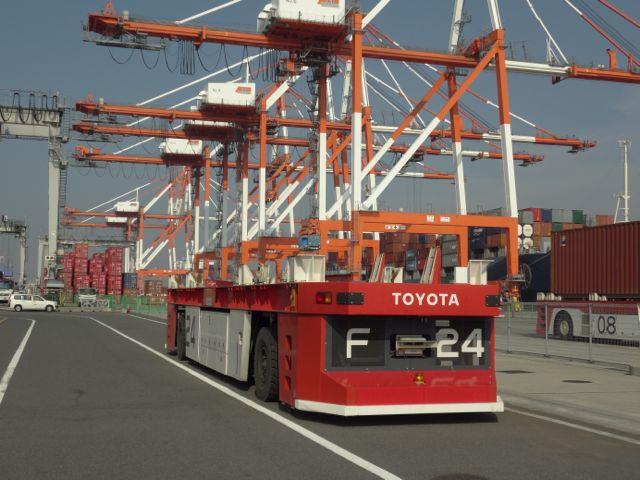 Toyota's container handling AGV won the 2012 Good Design Gold Award in 2012. |
Toyota Industries Corp (TICO) wants to sell its container handling AGVs, a relatively new product, to ports outside Japan.
Kenichi Ito, TICO's chief of port business development, says: "At the moment, the Toyota container transport AGV system has been [operating in] Japan only. We will be selling this system overseas in future."
He adds that customers' needs for greater efficiency in port logistics operations are expected to rise. "To respond to these needs, we will develop container transport AGV systems that create new values. This will involve combining our meticulous attention to detail, flexibility and the machinery's stability and accuracy, and delivering these systems to customers together with our logistics know-how."
The first Toyota AGV system was launched in December 2008, followed by the second-generation system in April 2012.
Tobishima Container Berth Co Ltd at the Port of Nagoya, Asia's only automated container terminal, was the first to implement full-scale automated operations of Toyota's new AGVs. Since 2008, there are 33 AGVs operating in the Port of Nagoya. The 30.5 T capacity AGVs are 14.3 m (46.9 ft.) long, 2.8 m (9.2 ft.) wide and 1.8 m (5.9 ft.) high. They have a diesel-electric drive, a maximum top speed of 25 km/h (15 m/ph) and a positioning accuracy of 20 mm (0.8 in.).
Last year, the container handling AGVs won the 2012 Good Design Gold Award from the Japan Institute of Design Promotion. Other winners included Nike, Samsung and Honda.
The system consists of an AGV that transports containers between piers and storage yards at container terminals, and the software that controls vehicle allocation operations. TICO says it is based on an entirely new concept: in addition to automating transport work in yards, this system also co-ordinates closely with other facilities to help synchronise and optimise overall loading and unloading operations. The system aims to strengthen the competitive power of harbours by improving the operating ratio of container terminals.